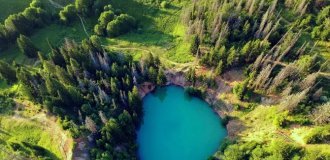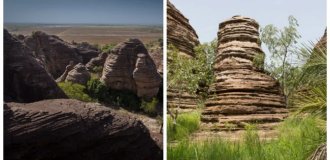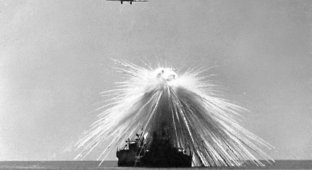Battleship Yamashiro. Construction and service history (7 photos)
Many ships served in the navy of the Japanese Empire. A significant part of them sank during the Second World War. And some of them fought to the last, not wanting to give up. This article is about one such ship - Yamashiro. 
Yamashiro shortly after entering service
This was the second battleship of the Fusō series. It was an example of a typical dreadnought, developed on the eve of the Battle of Jutland. The Fusō class was largely based on British shipbuilding experience and at the time of its creation was the most combat-ready in the Imperial Japanese Navy. Initially, parliament approved the construction of only the lead ship. But subsequently the staff was expanded, and the future Yamashiro received a start in life.
Structurally, the second ship of the series was not much different from the first. Its length was 192.1 m, width - 28.7 m. The standard displacement reached 29,326 tons, which was an absolute record among battleships in service with various countries at that time. Power plant of 24 Miyahara water-tube boilers with mixed heating with a capacity of 40,000 hp. worked on two sets of Brown-Curtis turbines, driving two propeller shafts. In theory, the ship was supposed to reach a speed of 22.5 knots. But in reality, he even exceeded it and reached 23.3 knots.
The armament of the Fusō-class battleships was designed to guarantee artillery superiority over any enemy ship in any direction of fire. 12 356-mm guns were placed in two-gun turrets according to the 2-1-1-2 scheme, which made it possible to reduce the area of non-firing zones to a minimum. The rate of fire was 1.5 rounds/min. At that time, this was an extremely good result. The auxiliary caliber consisted of 16 152 mm guns in casemates. Torpedo armament was limited to six 533-mm submarines.
Yamashiro later received a battery of six 80 mm anti-aircraft guns mounted on both sides of the conning tower, second funnel and aft superstructure. In addition, in 1922, a catapult was installed on tower No. 2 for launching aircraft - the British Gloster Sparrowhawk and Sopwith Camel biplanes. Thus, Yamashiro became the first Japanese battleship with aircraft armament.
In 1930-1935, the ship underwent a major modernization. Anti-torpedo bulges were installed, a pagoda superstructure replaced the foremast, and the aft superstructure was rebuilt for new anti-aircraft guns. All water tube boilers were replaced with 6 oil boilers from Kanpon. They were installed in the former aft boiler room, which made it possible to free the bow boiler room for other needs, and to dismantle the first chimney. The British turbines were also removed, and new ones were installed in their place, all from the same Kanpon company, with a capacity of 75,000 hp. 
Yamashiro at a fleet review, 1930
The armament has also undergone changes. All 80-mm anti-aircraft guns were replaced with eight 127-mm universal guns with an estimated rate of fire of 14 rounds per minute. True, as practice has shown, they could only fire steadily at a rate of 8 rounds per minute. In addition, the two front 152 mm guns had to be removed and their casemates riveted in, because due to the increased draft they were filled with water.
The anti-aircraft armament was supplemented by eight 25 mm guns. Subsequently, during the war, Japanese designers gradually increased their number to 92. At the same time, the battleship also received 10 13.2-mm Hotchkiss machine guns, but at that time they were already outdated and ineffective. However, 25-mm guns also raised questions due to the confusion of the sight, low aiming speed and rate of fire.
In general, as a result of the modernization of the 1930s, the battleship increased its length by 20 m (an overlay on the bow, which gave the ship a clipper shape), its width by almost 4 m, and its displacement by 6000 tons. The speed also increased and amounted to 24.7 knots. 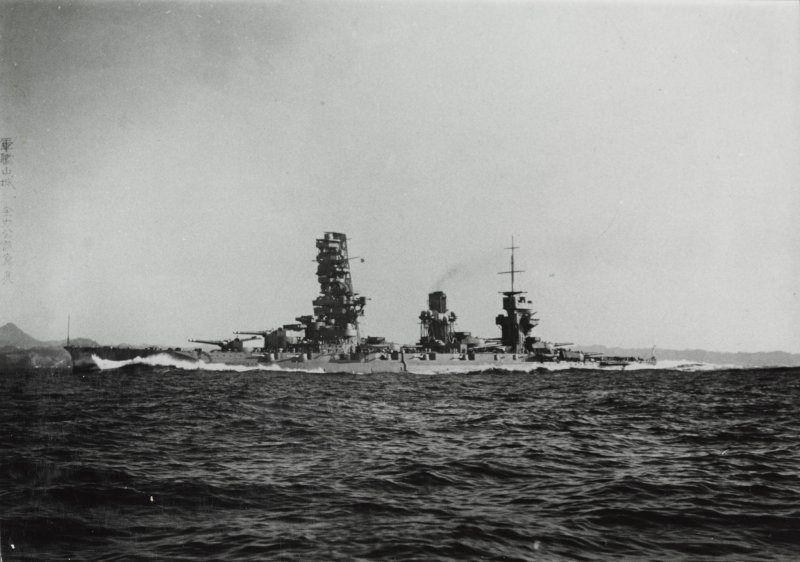
Yamashiro in Tateyama, December 1934
Yamashiro was laid down at the Yokosuka shipyard on November 20, 1913, but entered service with a significant delay - March 31, 1917. By that time, the First World War in Southeast Asia had come to an end, so all the actions of the new battleship were reduced to patrolling the Chinese coast. There is almost no information about Yamashiro's service in the 1920s. So, in 1923, he provided assistance to victims of the earthquake, and in 1925 he patrolled the shores of Korea.
After the modernization was completed in 1935, Yamashiro, under the leadership of Captain Chuichi Nagumo, became the flagship of the Combined Fleet. Later the battleship was appointed flagship of the 2nd Divisionvision of the 1st Fleet, which included both battleships of the Ise type and the same type Fusō.
After the start of the second Sino-Japanese War, Yamashiro was located mainly off the coast of the metropolis. On the morning of December 8, before the attack on Pearl Harbor began, the battleship was ordered to put to sea and move to Bonin Island to provide long-range support. But after 6 days the ship returned to base, since there was still no need for support. The next time Yamashiro went to sea on alert was on April 18, 1942 after the Doolittle raid, but soon returned without finding the enemy. Then, during the Battle of Midway, the battleship went to the Aleutian Islands to misinform the American command. Upon her return and until September 1943, the ship served as a training ship in the Inland Sea.
During Yamashiro's training service, the Japanese command considered options for converting it into a hybrid aircraft carrier. But no final decision was made. On October 13, 1943, the ship was sent as a transport to Truk. On November 8, on the way back to Japan, the formation from Yamashiro and two accompanying aircraft carriers was discovered by the submarine USS Halibut. The Americans fired a torpedo at the aircraft carrier Junyō, but missed and hit Yamashiro. Fortunately for the battleship, the torpedo did not explode. Yamashiro tried to destroy the submarine, but the Americans, deciding that the ship's armor was too thick, no longer fired torpedoes and disappeared.
However, Captain Yamashiro's requests to use the ship in active combat operations, supported by the history of unsuccessful torpedoing, did not find a response from the command. Quite the contrary. In June 1944, during the Battle of Saipan, the chief of operations at the naval headquarters, Shigenori Kami, proposed bringing Yamashiro there, stranding the ship and using it as a coastal battery.
The plan was approved by Prime Minister Tojo, but defeat in the Battle of the Philippine Sea changed everything. In July it was decided to recommission Yamashiro as a first-line battleship. She was repaired and additional anti-aircraft guns and radars were installed, after which on September 10 she became the flagship of the 2nd Division of the 2nd Fleet under Vice Admiral Shoji Nishimura. From September 23 to October 4, during the delivery of troops to Lingga Island, Nishimura's pennant was on Fusō. Then, again as flagship, Yamashiro left for Brunei to prepare for the Leyte Gulf campaign.
On October 22, 1944, Nishimura's force departed Brunei, intending to join Vice Admiral Takeo Kurita's forces in Leyte Gulf. They sailed west from the island of Mindanao into the Surigao Strait, where they were discovered by torpedo bombers and bombers from the aircraft carrier Enterprise on October 24 at 09:08. They immediately attacked Yamashiro. As a result of the shelling and bombing, a fire broke out on the ship, as well as flooding, which tilted the battleship 15 degrees to starboard. Somewhat later, counter-flooding on the port side straightened the flagship. 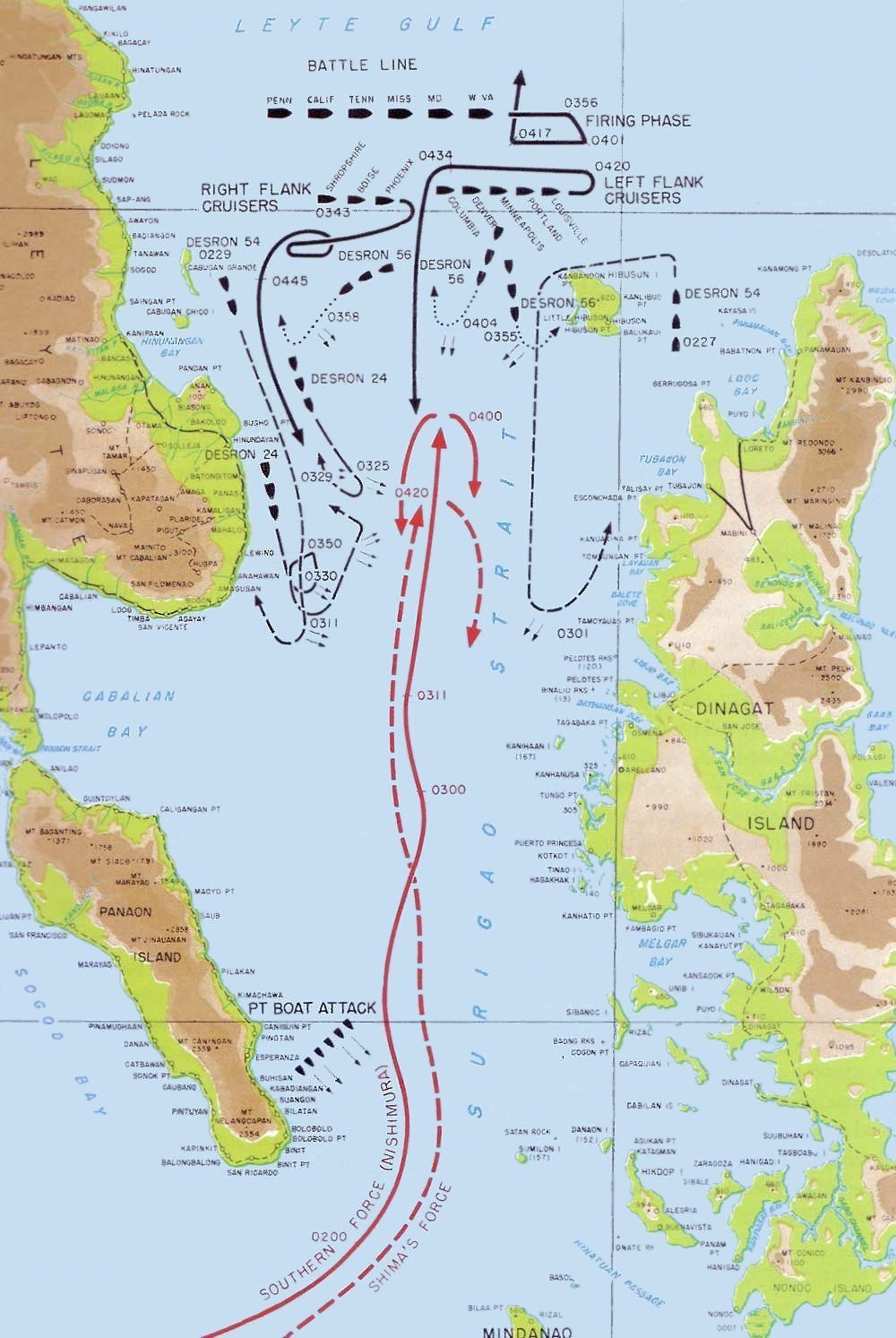
Diagram of the Battle of Surigao Bay
During the day, the crew managed to eliminate the malfunctions, and at 22:52 the battleship opened fire on the American torpedo boats, driving them away before the attack began. At 03:00 the next day, October 25, the destroyers launched an attack. Their torpedoes hit Fusō eight minutes later. Yamashiro opened fire with auxiliary caliber, but this had no effect, and at 03:11 two more torpedoes from Monssen and Killen hit him. The Japanese flagship tilted to port and was forced to reduce its speed. At 03:40, the Americans scored another torpedo hit on the bow of the battleship.
But this was only the beginning for the already seriously damaged Yamashiro. At 03:52, Admiral Oldendorf's formation entered the battle. The heavy cruisers Louisville, Portland, Minneapolis and the light cruisers Denver, Columbia, Phoenix and Boise fired at the battleship. Then a combination of American battleships appeared - West Virginia, Tennessee and California. The first of them, with its very first salvo, hit Yamashiro with a 406-mm shell. Then the battleship Maryland joined the shelling, followed by Pennsylvania and Mississippi, which only managed to fire one salvo. At 03:56, the Australian cruiser HMAS Shropshire opened fire. 
Yamashiro under fire during the Battle of Leyte Gulf.
Nishimura's force was numerous, but, nevertheless, at least 7 American ships fired exclusively at Yamashiro. The rest fired periodically at the battleship. Almost immediately fires broke out on the ship. But despite this, he continued to fire with all guns in different directions. At the same time, he fired back from enemy battleships and covered allied destroyers from enemy destroyers. At 04:04 an explosion occurred at Yamashiro. But, despite this, the ship engulfed in fire even increased its speed.
